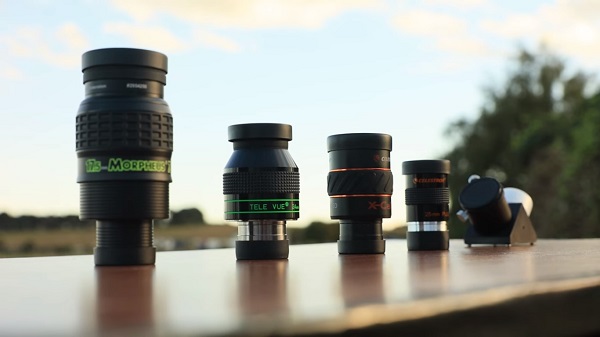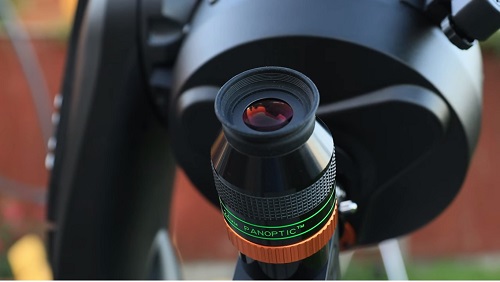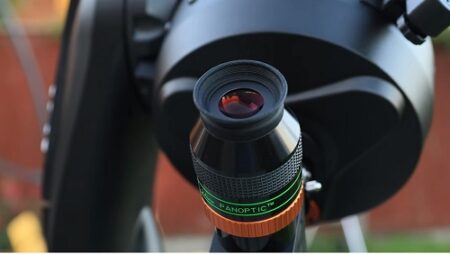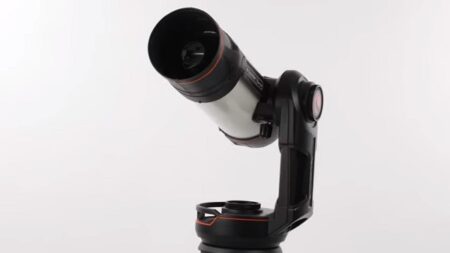If you’re a passionate astronomer or a casual stargazer, having the right eyepiece for your telescope is crucial for experiencing clear, detailed views of celestial objects. But with a plethora of options available in the market, finding the perfect eyepiece can be a daunting task. This is where the eyepiece selector calculator comes into play.
This innovative tool takes the guesswork out of choosing the right eyepiece for your telescope, allowing you to make an informed decision based on your specific telescope model, focal length, and desired magnification.
In this blog post, we’ll explore the importance of using an eyepiece selector calculator and how it can help you enhance your stargazing experience.
Understanding Telescope Specifications
When it comes to selecting the perfect eyepiece for your telescope, it’s important to have a good understanding of your telescope’s specifications. The focal length, F-ratio, and type of telescope all play a crucial role in determining the best eyepiece for your viewing needs.
Focal Length and F-Ratio
To understand the relationship between the focal length and F-ratio of a telescope, it’s important to know that the focal length is the distance between the primary lens or mirror of the telescope and the point where the image comes into focus.
The F-ratio, on the other hand, is the ratio of the focal length to the aperture of the telescope.
These two specifications are important when selecting an eyepiece because they determine the magnification and field of view that the eyepiece will provide.
Telescope Types and Their Influence on Eyepiece Selection
There are several types of telescopes, including refractor, reflector, and compound telescopes, each with their own unique characteristics.
The type of telescope you have will influence the type of eyepiece you should choose. For example, a reflector telescope may require different eyepieces than a compound telescope due to differences in focal length and F-ratio.
- Refractor Telescopes
- Reflector Telescopes
- Compound Telescopes
Plus, the type of telescope you have will also impact the amount of light and the quality of the image you can achieve, which is crucial when selecting an eyepiece for optimal viewing. It’s important to consider these factors when choosing the right eyepiece for your telescope.
Factors Affecting Eyepiece Choice

Some important factors to consider when choosing the right eyepiece for your telescope include:
- Field of view
- Eye relief and comfort
- Magnification and optical quality
- Different types of eyepieces
Though eyepiece choice may seem overwhelming at first, understanding these factors will help you make an informed decision.
Field of View Considerations
Factors to consider when evaluating field of view include the type of object you want to observe, the focal length of your telescope, and the magnification you desire.
A wider field of view is ideal for observing large celestial objects or scanning the night sky, while a narrower field of view is better suited for detailed observations of smaller objects.
Eye Relief and Comfort
Comfort is key when it comes to eyepiece selection. Factors such as eye relief, eyecup design, and adjustable features can make a significant difference in your observing experience.
Ensure that the eyepiece provides the necessary eye relief for your comfort and that it is compatible with any eyeglasses or corrective lenses you may wear.
The ergonomic design of the eyepiece and its overall comfort level are also important considerations for long observing sessions. The overall comfort level is crucial when selecting the right eyepiece.
Viewing through an eyepiece with inadequate eye relief can cause discomfort and eye strain, ultimately impacting your enjoyment of stargazing. Comfort is just as important as performance when it comes to choosing the perfect eyepiece for your telescope.
Magnification and Optical Quality
Viewing celestial objects at varying magnifications can enhance your observing experience, but it’s important to consider the optical quality of the eyepiece to ensure a clear and crisp view. Keep in mind the focal length of your telescope, as well as the desired magnification, when selecting an eyepiece to achieve the best optical quality.
Affecting your ability to see fine details and the overall image quality, these factors should be carefully considered to find the perfect balance between magnification and optical quality.
Different Types of Eyepieces
Relief Depending on your observing preferences and the type of telescope you have, there are various types of eyepieces to choose from.
The information should be broken down into a table with 2 columns and 5 rows View the table below for a breakdown of the different types of eyepieces and their characteristics: Importantly The information should be broken down into a table with 2 columns and 5 rows.
- Standard Eyepieces
- Wide-Angle Eyepieces
- Zoom Eyepieces
- Barlow Lenses
- Specialty Eyepieces
It is important to understand the features and benefits of each type of eyepiece to determine which will best suit your observing needs. The table provides additional details for a comprehensive comparison.
Using the Eyepiece Selector Calculator
Eyepiece Selector Calculator
Not sure how to use the Eyepiece Selector Calculator? No worries! We’ve got you covered with a step-by-step guide to help you get the most out of this powerful tool.
Step-by-Step Guide
One of the most user-friendly features of the Eyepiece Selector Calculator is its step-by-step interface. Simply enter the specifications of your telescope in the left-hand column and the desired magnification in the right-hand column, and let the calculator do the rest. Below is a breakdown of each step in the process:
| Step 1 | Enter Telescope Aperture and Focal Length |
| Step 2 | Enter Desired Magnification |
Interpreting Results
For many users, interpreting the results of the Eyepiece Selector Calculator can be a bit confusing. However, once you understand the key measurements provided, you’ll be able to make informed decisions about which eyepiece to use for your stargazing needs.
With the Eyepiece Selector Calculator, you will receive valuable information such as the recommended eyepiece focal length, actual magnification, and field of view. Understanding these results will help you choose the right eyepiece for your specific observing targets and preferences, such as planetary viewing or deep-sky observation.
Tips for Accurate Calculations
Eyepiece selection can greatly impact your viewing experience, so it’s important to make accurate calculations. Use these tips to ensure you’re getting the most out of the Eyepiece Selector Calculator:
- Understand the capabilities and limitations of your telescope
- Take into account the atmospheric conditions and light pollution in your area
Eyepiece selection is a critical aspect of telescopic observing, and these tips will help you make the best choices for optimal viewing. Perceiving the nuances of your telescope and eyepiece options will contribute to a more fulfilling stargazing experience.
The Eyepiece Selector Calculator is a convenient and powerful tool that can enhance your stargazing experience.
By following these tips and understanding how to interpret the results, you’ll be well on your way to finding the perfect eyepiece for your astronomical observations. The more you understand about your equipment and how to utilize these helpful tools, the more enjoyable and rewarding your time under the stars will be.
Advanced Considerations
Unlike basic eyepiece selection, advanced considerations take into account additional factors that can further enhance your viewing experience. When choosing the perfect eyepiece, it’s important to consider the impact of Barlow lenses, the role of filters, and the trade-offs between budget and quality.
- Barlow Lenses and Their Impact
- The Role of Filters
- Budget and Quality Trade-offs
Barlow Lenses and Their Impact
An essential accessory for any telescope, a Barlow lens effectively doubles or triples the magnification of your eyepiece. When used in conjunction with different focal length eyepieces, a Barlow lens can provide a wide range of magnification options.
It’s important to consider the impact of using a Barlow lens when selecting your eyepiece to ensure compatibility and optimal performance.
The Role of Filters
Filters are an often overlooked yet valuable tool for enhancing your astronomical observations. Different filters can improve contrast, reduce glare, and enhance the visibility of specific celestial objects. It’s important to consider the use of filters when selecting your eyepiece, as they can greatly enhance the quality of your viewing experience.
To optimize your viewing experience, consider incorporating filters such as moon filters, neutral density filters, or color filters to enhance the visibility of specific details and reduce glare or light pollution.
Budget and Quality Trade-offs
Impact: With the wide range of eyepieces available on the market, it’s essential to weigh the trade-offs between budget and quality. While higher-priced eyepieces may offer superior optical performance and construction, budget-friendly options can still provide satisfactory results.
Consider the impact of your budget on the quality of your viewing experience, and prioritize factors such as eye relief, field of view, and optical coatings when making your selection.
Find The Perfect Eyepiece Selector Calculator
Presently, with the help of the Eyepiece Selector Calculator, you can easily find the perfect eyepiece for your telescope.
This tool takes the guesswork out of selecting the right eyepiece by providing you with a simple and accurate way to determine the best options for your specific telescope and viewing requirements.
By inputting key information such as your telescope’s focal length and the object you wish to observe, the calculator will generate a list of compatible eyepieces, making the decision-making process quick and efficient. With this tool at your disposal, you can feel confident in your eyepiece selection and enhance your overall viewing experience.

I’m Ali. BestTelescopeReview.com is my little place on the web to express what I’ve learned first-hand, specially about the telescope part. I am writing these articles to share my love for astronomy with you.










